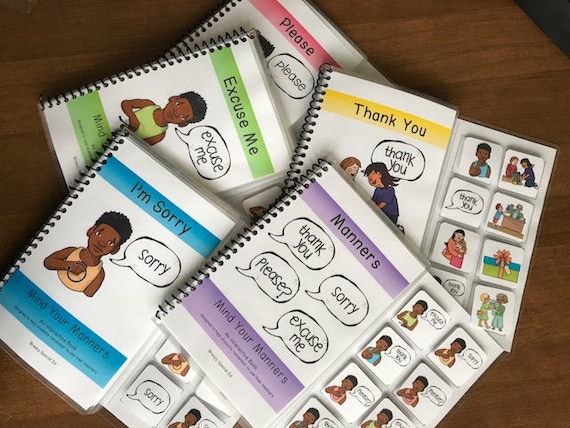Sometimes it's the littlest details that make the biggest difference in a classroom. Here's a few of my little classroom details. Someday I will show you all of the big details too...I just need to be more prepared for that!
Supply station central. With visuals. AMAZING - because students and staff know where everything goes. So simple and organized and makes my life easier than my last two years when I thought I was pretty organized but had different things throughout the room. Everything in the same place is the way to go.
Work task boxes on a cart. When you don't have shelves...you can find something else that works! I love our independent work stations. Someday I'll have you show you all what's inside these boxes!! Update: See all my posts on work tasks.
Visuals for greetings in the morning, right outside the door to encourage students to greet each other as they come in. This was a freebie from The Adventures of Room 83!
Visuals on the door help students to remember to ask before leaving the room and to tell staff what it is they need. Keeping the door shut helps too!
This fabulous "Turn it in" idea was from the Autism Helper - um so smart! I took hers and edited it a little giving myself spaces for 3 forms coming in (they always seem to happen at the same time) and also color coded so the students can better recognize their names.
The wet ones and the Clorox wipes frequently were confused in my classroom, so I had a student draw these pictures for me and it has helped so much.
Someday I'll give you the grand tour, but until then I hope you enjoy these snapshots!

























